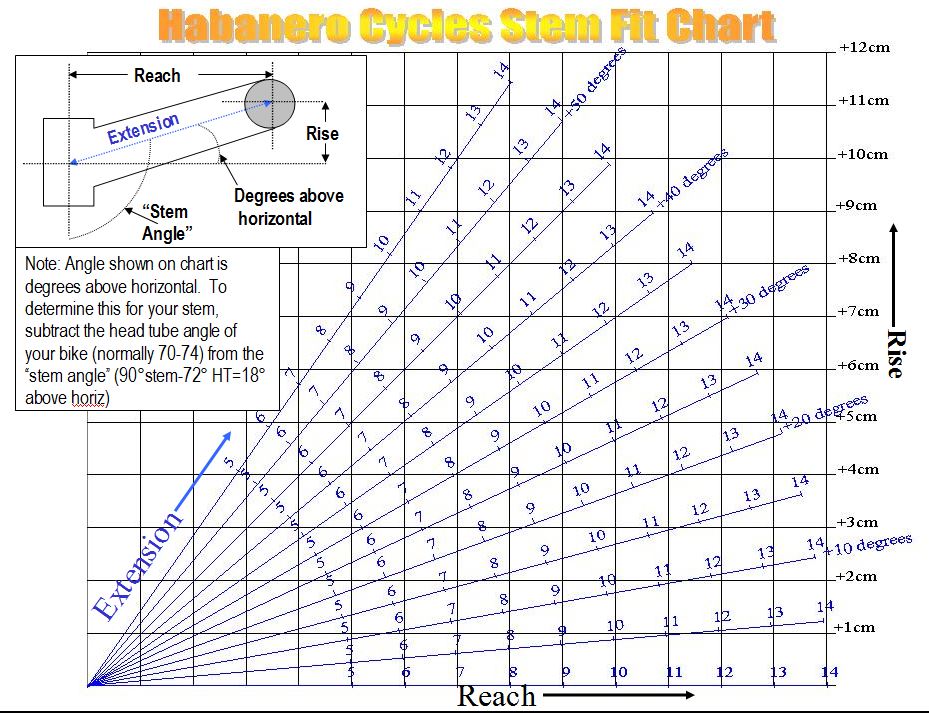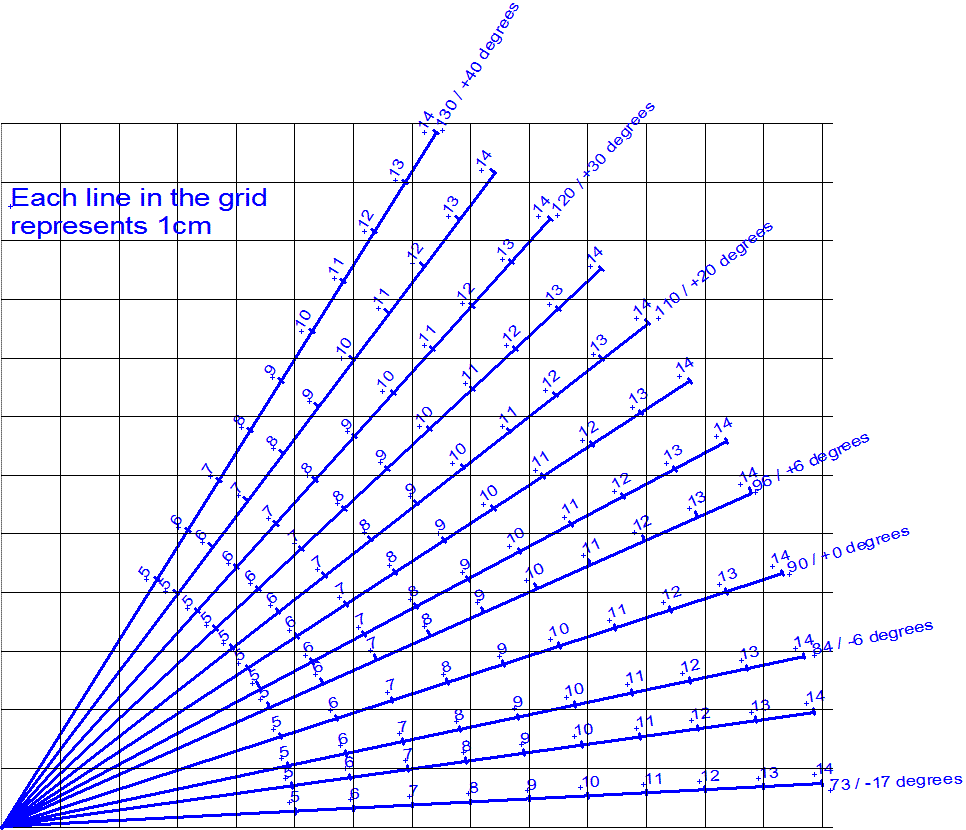|

Note: The above method of measuring stems is only
one of a plethora of methods employed - but is probably the most
popular one currently. Some manufacturers measure stems in
"degrees above horizontal" (common on road bikes, and
assuming ~72-3 degree head tube), "degrees from 90
degrees", etc. If in doubt, print out the chart, and use
it to guesstimate your stem's "degrees above horizontal"
value by aligning the bottom of the chart with a horizontal surface
and sighting the stem extension against the extension lines on the
chart. You'll usually be pretty close in estimating your head tube
angle at 73 degrees (road) or 71 degrees (MTB). So, to arrive
at "stem angle", add the head tube angle to the
"extension angle" from the chart and you'll have a number
that most bike shops can use.
To calculate the effect of raising a stem, add
0.96cm of rise for every 1.0cm of quill or steer tube you expose,
and subtract 0.30cm of reach.
____________________________________________________________
If you want to calculate the new stem you need
without doing any math, the following table should help.
I've plotted the chart based on a 72 degree head
tube angle, so it's not going to be off by more than 1-2 degree for
95% of the bikes out there. This really won't affect the
outcome of the results enough to matter. I've
labeled the "commonly available stem angle options" on the
lines below, so really all you need to do to calculate your new stem
is to plot your current stem (assuming it's a -17, -6, +0. +6. +20,
+30, or +40 degree stem), and then move up/down/back/forth from that
point to your desired handlebar position, and read off the
"nearest available stem". For
example, let's say you are currently running a 9cm, +6 degree (aka
"96 degree") stem, and you have decided you want to raise
your bars 2" / 5cm higher than they currently are. First,
follow the 96 / +6 degree line out to the 9cm point, which
represents where your bars are now. Then count up five lines
(each is 1cm) from that position. You'll end up very close to
the 12cm point on the 120 / + 30 degree line, which means that if
you swap out your 96 degree, 9cm stem for a 120 degree, 12cm stem
(and leave the spacers as they are), your bars will end up about 5cm
/ 2" higher. A similar approach can be used
for any combination of moving the bars (higher / lower / longer
reach / shorter reach).

|

